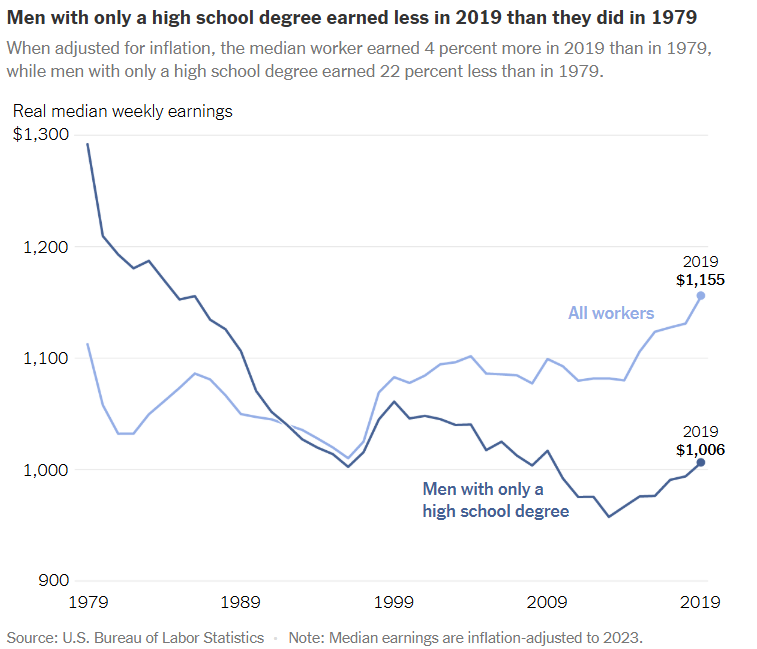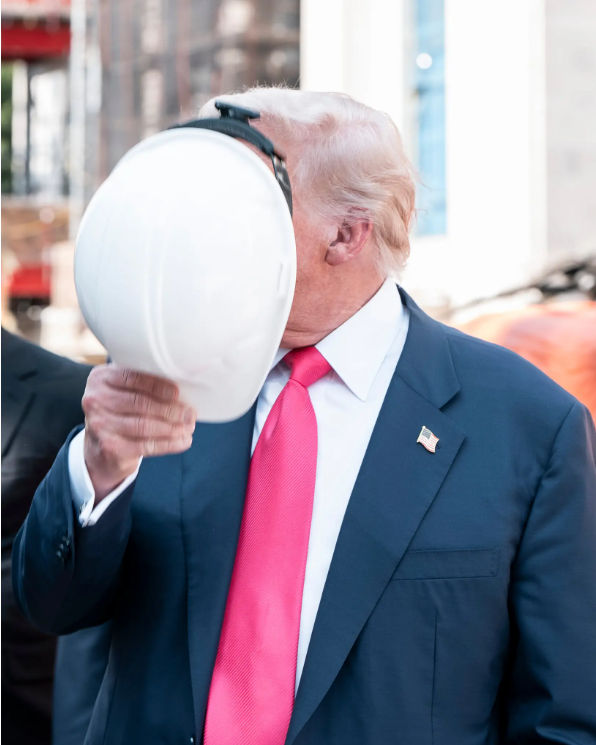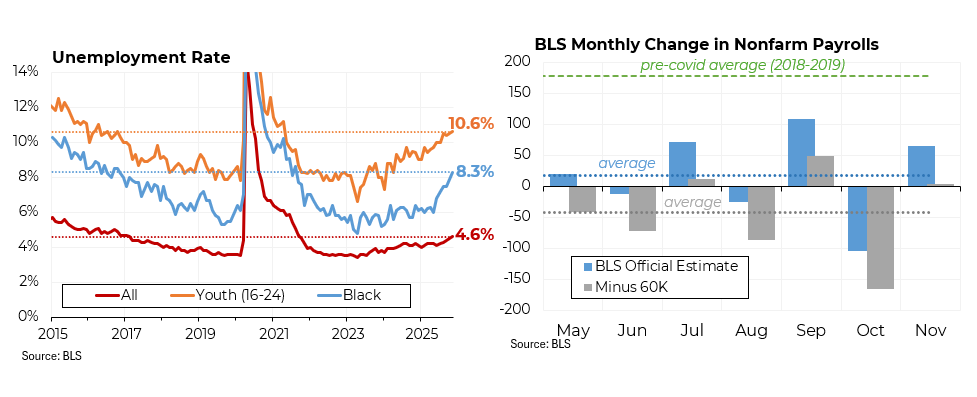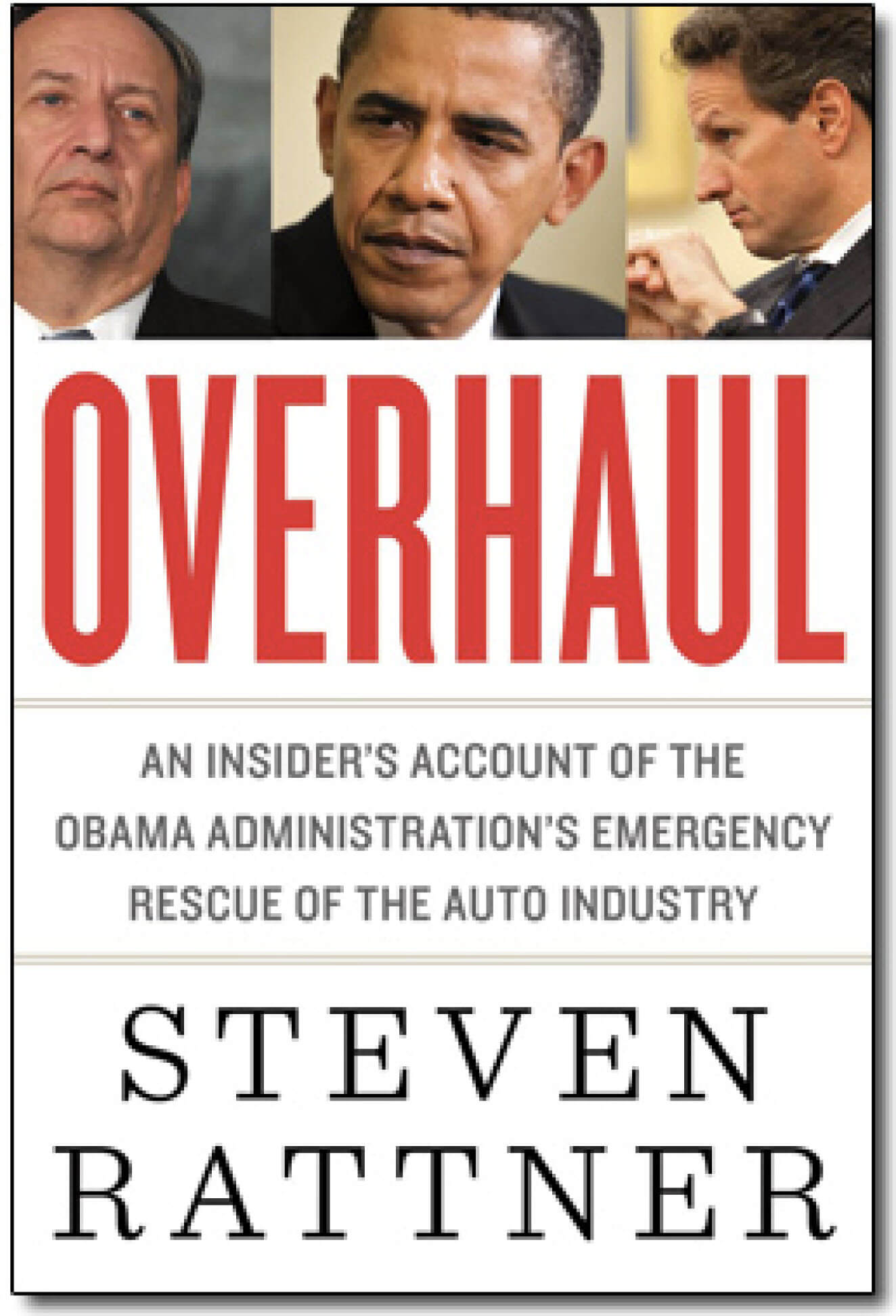Donald Trump got lucky in his first term. When he arrived, inflation was low, unemployment was falling and growth was steady. He applied a bit of juice via his large regressive tax cut, and the economy accelerated without triggering inflation. In retrospect, his term was a bit like a speeding car that got away with it.
This time, he may not be so fortunate.
On the surface, the economy is doing fine, much like it was before Mr. Trump’s first term. But underneath that shiny exterior lurk significant weaknesses, troubles that were well perceived by voters — if perhaps sometimes subconsciously — and played a major role in Kamala Harris’s defeat.
It’s becoming increasingly apparent that the fruits of the economy’s steady expansion are not reaching most Americans. A growing share of our overall prosperity continues to accrue to the wealthy and to corporate shareholders (as evidenced in part by the extraordinary upward march of stock prices).
On the other end: the young and people who didn’t attend college — including white, working-class men who voted for Mr. Trump in large numbers. For many, the American dream increasingly feels like a mirage.
Start with people who didn’t attend college. While median earnings for all Americans have risen modestly (after adjusting for inflation) over the past 45 years, pay for men with only a high school education has fallen to $1,006 per week before Covid from $1,293 in 1979. A machinist went from earning roughly an average wage to an income more than 20 percent below that of a typical American. Some of these workers have been forced into lower-paying jobs or have never worked since. Others have even ended up suffering a “death of despair” such as suicide or overdose.

I saw this firsthand during my service as head of President Barack Obama’s auto task force. Intense competition — not just from China but also from countries such as Mexico — both reduced the number of high-paying union jobs and kept wages throttled for the jobs that remained. Technology has also played a role.
Now let’s look at the young. The American dream, the concept that each generation should live better than the previous one, is slipping from their grasp.
Children born in 1940 had a 92 percent chance of earning more than their parents did at 30 (after adjusting for inflation). Those hatched in 1980 had just a 50 percent chance.

Then there’s this: Millennials born between 1980 and 1984 had a lower probability of owning their own homes and a larger chance of being essentially bankrupt than baby boomers. By age 35, millennials born between 1980 and 1984 typically had 30 percent smaller net worths than their boomer counterparts, although the top 10 percent averaged 20 percent more wealth than the top 10 percent of boomers.

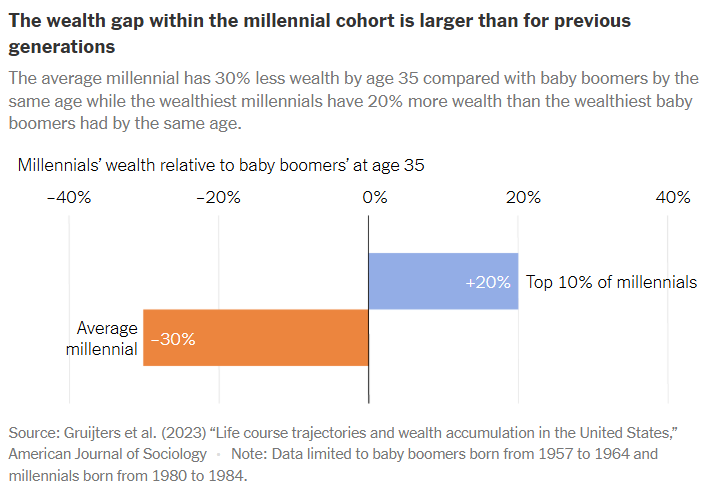
Overall, Americans’ satisfaction with the way things are going in the country plunged during the financial crisis and never recovered. The post-Covid inflation surge, which depressed purchasing power, dealt a further blow.
So it’s not hard to understand why many, disillusioned about the ability of traditional liberal policies to right their ship, were tempted by Mr. Trump’s braying populism. Now this has become Mr. Trump’s problem to solve — although the medicine he prescribed during his campaign will do little to address root causes and may even make things worse.
While inflation has moderated, prices remain higher than younger Americans can remember — and electing Mr. Trump will not return them to where they were.
By placing significant tariffs on imports, Mr. Trump is likely to increase prices even more. When prices rise further, Americans will be forced to buy less, reducing sales for vendors, thus causing them to slow hiring or reduce employee rolls. This is how tariffs cost our economy more jobs than they create or save.
Mass deportation of immigrants would quickly create labor shortages, particularly in critical areas like construction, farming and food production, and health care. While that could theoretically cause wages to rise in the short run, it would also lead to higher costs in all these areas, cutting into economic growth and ultimately leaving many worse off.
Nor should we root for an extension of Mr. Trump’s signature Tax Cut and Jobs Act, which shoveled approximately 85 percent of its largess into the hands of corporations and those making over $75,000 a year.
And nothing good will come for the average American by rewarding self-interested plutocrats who are pushing him to pull back on a wide range of regulatory policies, from cryptocurrencies to government control of the housing finance giants Fannie Mae and Freddie Mac. For example, abandoning antitrust enforcement could allow anticompetitive mergers, resulting again in higher prices for consumers.
The new administration will probably turn its back on initiatives that could help, such as more education and more training. It’s also unlikely to embrace policies needed to cushion the blow felt by working-class Americans, including the Affordable Care Act, which brought health care to some 40 million, many of them low income. And instead of Mr. Trump’s regressive tax plan, we need more progressive taxation (“redistribution” should not be a dirty word), to help those left behind. As a matter of fairness, wealthy Americans should be prepared to pay more.
Mr. Trump caught a lucky break in his first term, arriving in time to ride the wave of recovery begun by President Obama. If he fails to raise living standards for those below the top tier, his second turn in the White House may well end badly, especially if he follows through on his counterproductive campaign promises.
